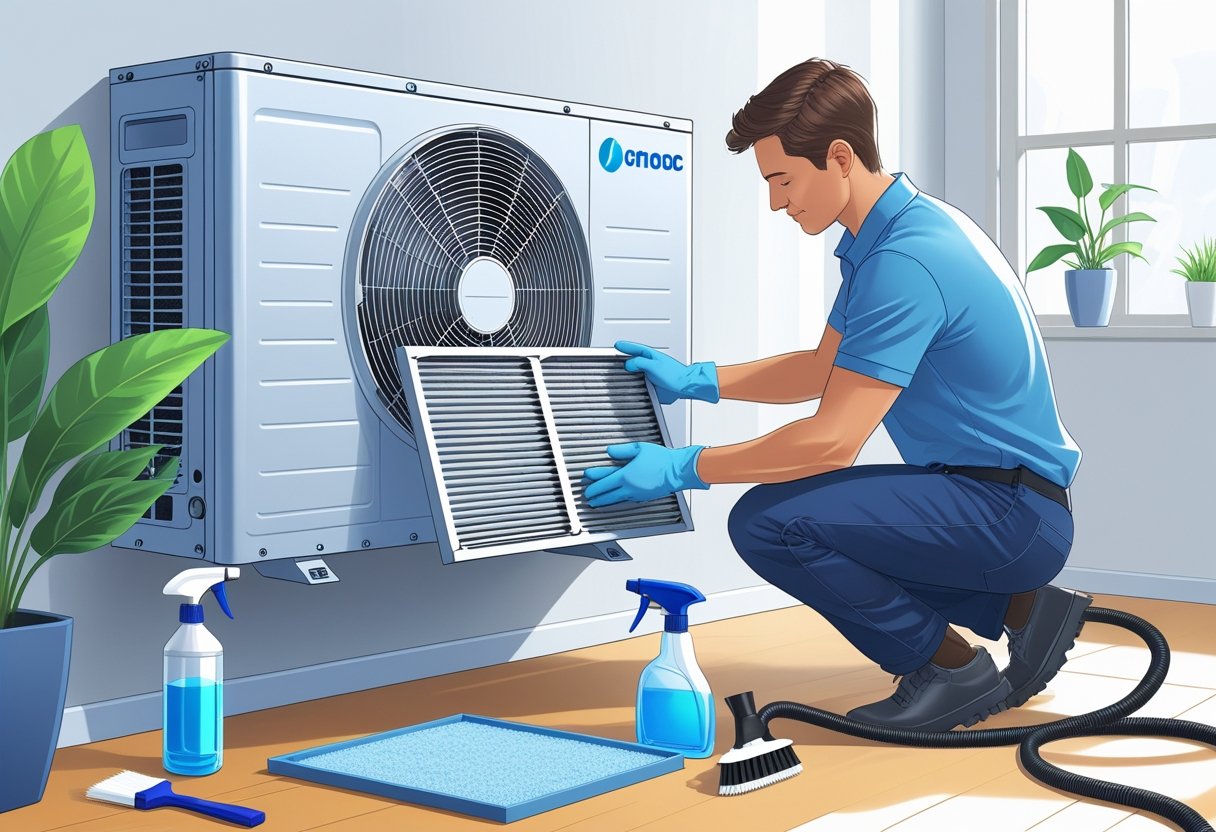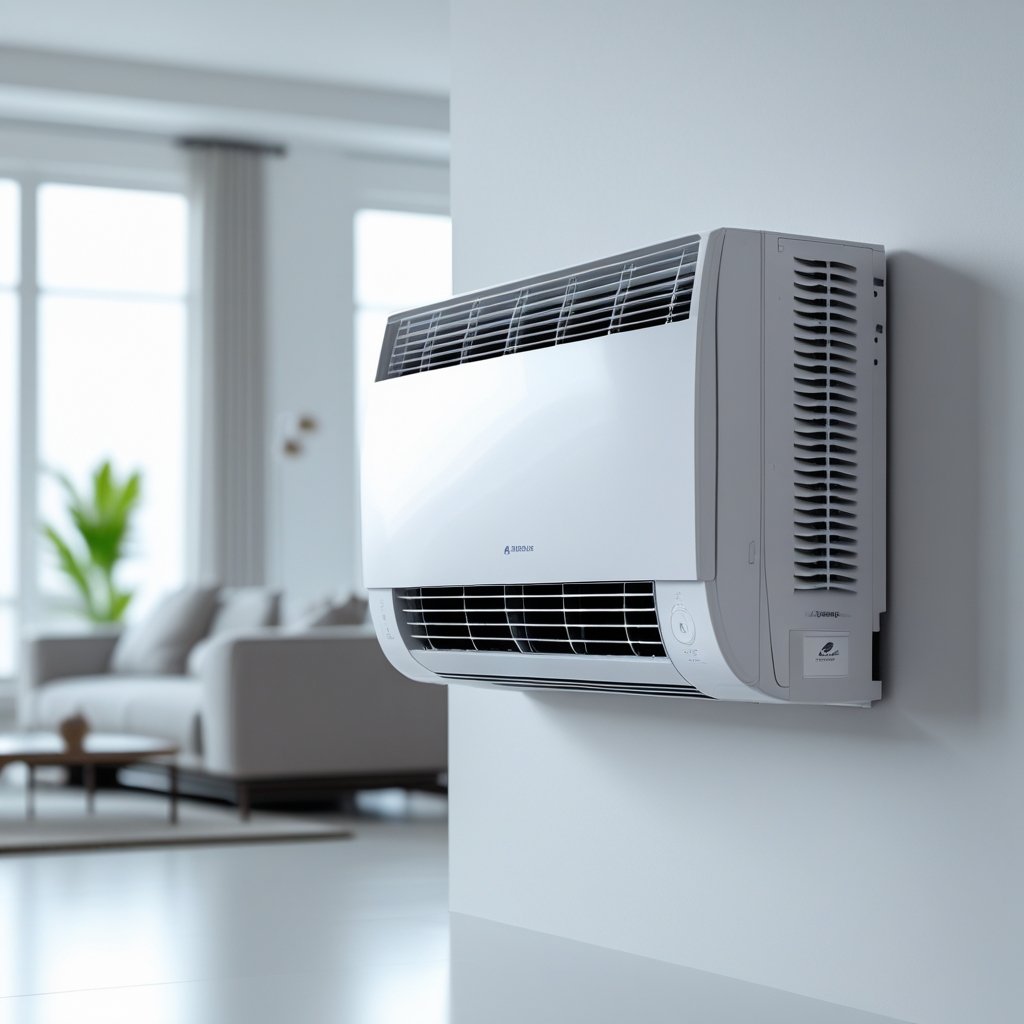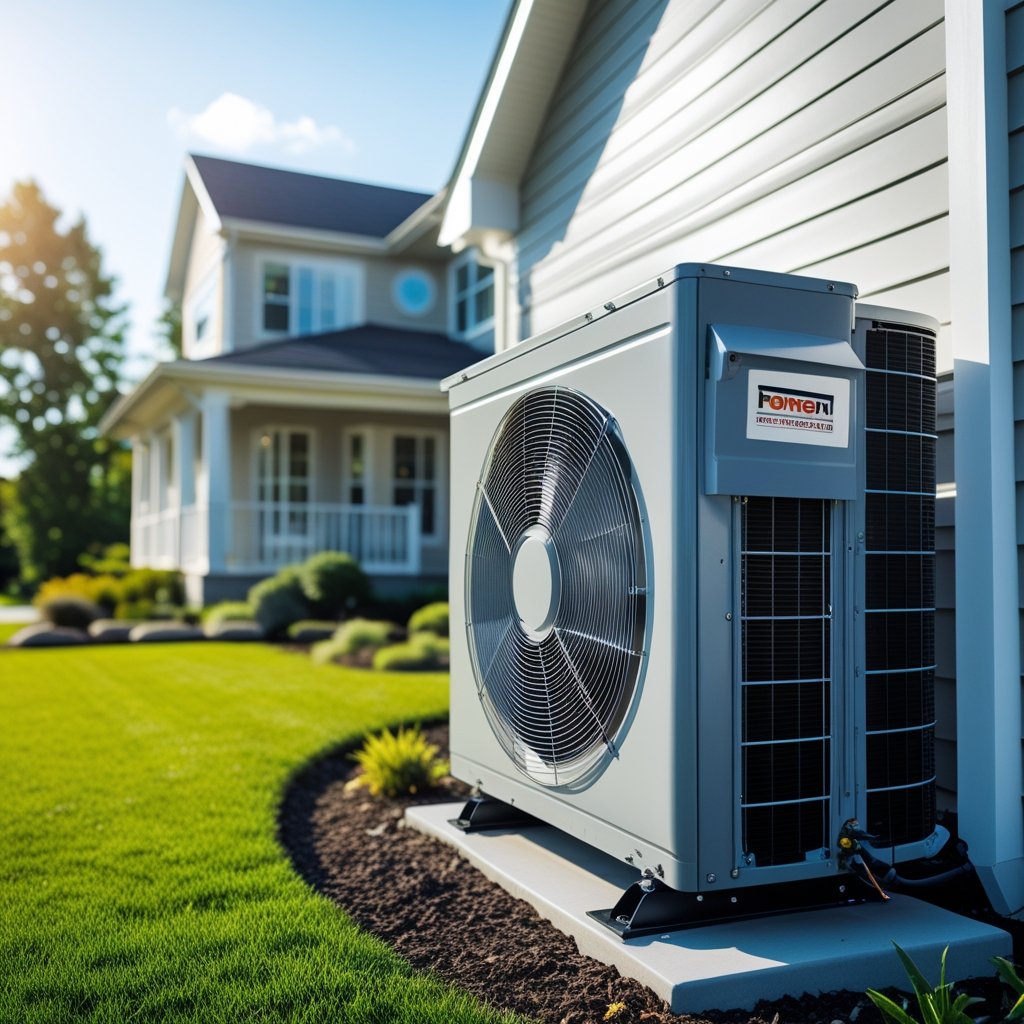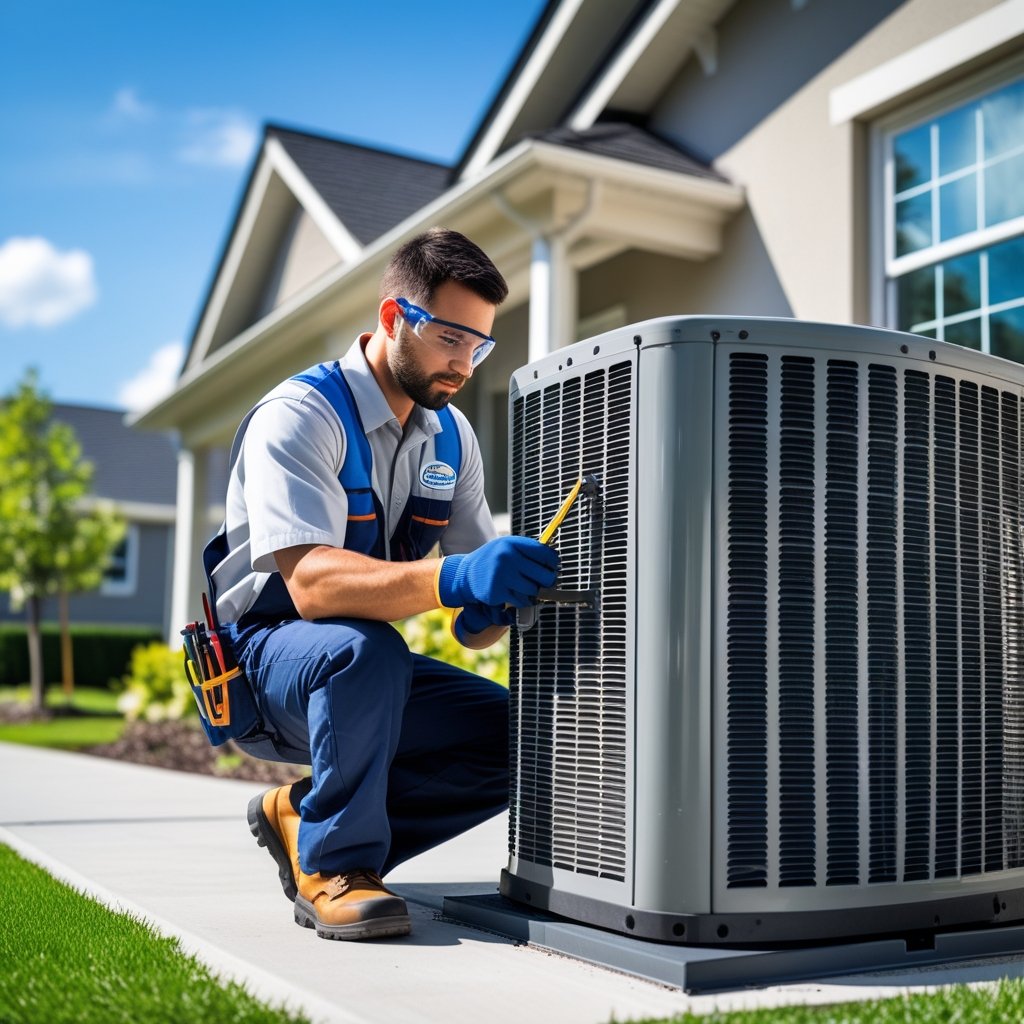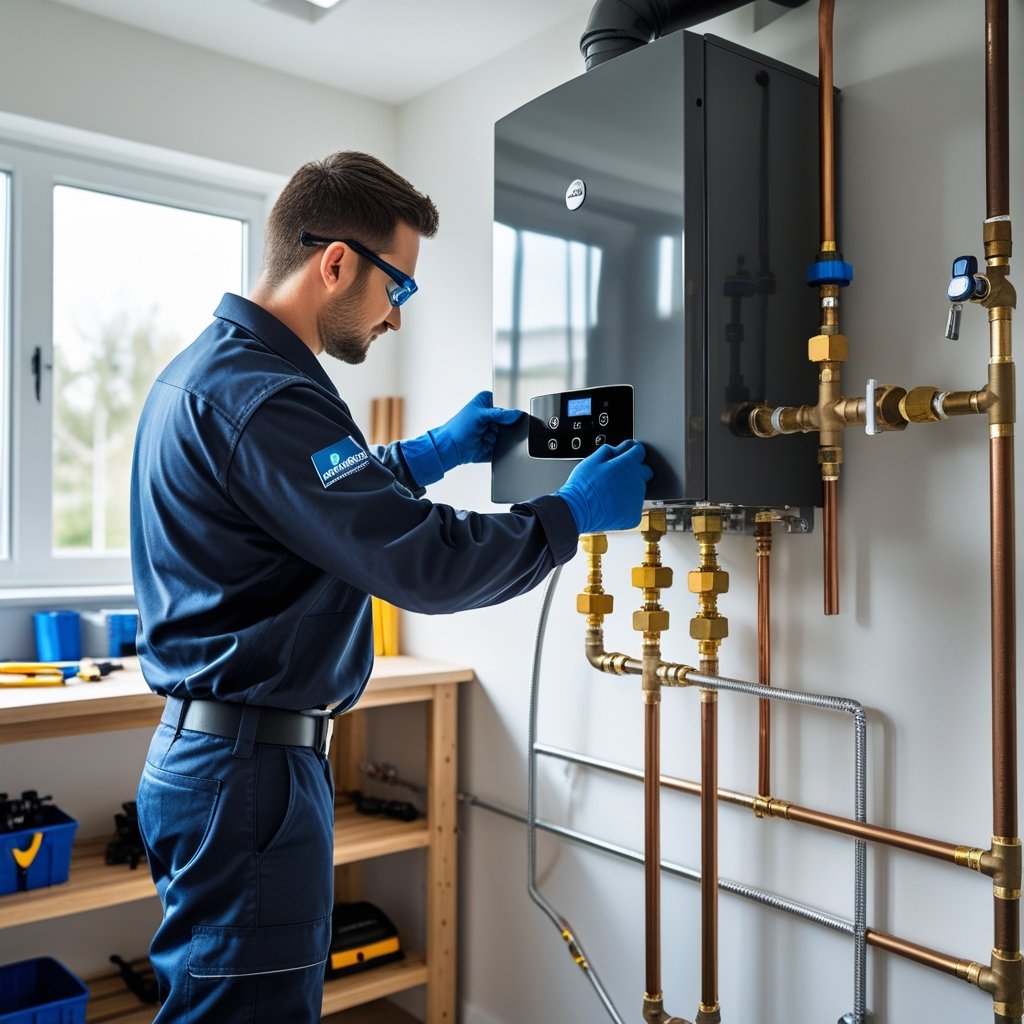Cleaning your mini-split system really matters if you want it to keep running smoothly and avoid those surprise repair bills. A little regular cleaning goes a long way—your system uses less energy, lasts longer, and just feels better to live with. If you know how to handle the basics, you can save yourself time and keep your home’s air a whole lot fresher.
You don’t need to be an HVAC whiz. Simple stuff—wiping down the indoor unit, washing or swapping out filters, checking for leaves and debris around the outdoor section—makes a real difference. If you’re not into DIY, Leo Kob Co., a family-run business serving South Central Pennsylvania since 1904, offers trustworthy maintenance with no sneaky fees.
Honestly, keeping your mini-split working well isn’t rocket science. With a little care, you dodge bigger headaches down the road. Here are some straightforward tips anyone can try.
Understanding Your Mini Split System
A mini split system has a few main parts working together to heat or cool your place efficiently. If you get the basics and know what to watch for, you’ll keep things running smoothly.
Main Components Overview
Most mini splits have two main pieces: the indoor air handler and the outdoor compressor. The indoor part sits inside and pushes warm or cool air into your rooms. Outside, the compressor moves refrigerant around the system.
Inside the indoor unit, there’s a fan, an evaporator coil, and an air filter. The fan blows air over the coil to change its temperature, while the filter snags dust and dirt. The outdoor compressor and condenser coil handle getting rid of heat taken from your home.
If you keep these parts clean and in decent shape, your system works better and wastes less energy.
How Mini Split Systems Work
Mini splits move heat around with refrigerant. In cooling mode, they pull heat from your air and dump it outside. For heating, it’s the opposite—heat comes in from outdoors.
Your thermostat tells the compressor and fans when to turn on or off. Since mini splits only heat or cool specific rooms (no ducts), they’re usually more efficient than old-school central units.
But here’s the thing: if airflow gets blocked or parts get dirty, the system has to work harder—and you’ll feel it. Comfort drops, bills go up.
Common Signs Your Unit Needs Cleaning
Watch for these red flags:
- Airflow from the indoor units feels weak
- The system smells odd when it’s on
- Energy bills creep up with no obvious reason
- Weird noises from either the indoor or outdoor parts
Dusty filters or a gunky interior can cause all of this. Blocked drain lines sometimes lead to water leaks around the system. Electrical quirks—like flickering displays—might mean a pro needs to take a look. Leo Kob Co. can check these out during maintenance visits.
If you check your system now and then and clean filters every month or so, you’ll avoid most of these headaches. Notice any of these issues? Time for a deeper clean.
Why Regular Cleaning Is Important
If you want your mini split to work well, use less energy, and last longer, you’ve got to keep it clean. Skipping maintenance lets dust and dirt pile up, which leads to trouble. Regular cleaning means fewer repairs and a safer system.
Improving Air Quality
Your mini split moves air all around your home. If filters or coils get dirty, dust, pollen, and mold can float right back into your rooms. Not great if you have allergies or asthma.
Clean the filters at least once a month. That keeps the air fresher and stops nasty stuff from spreading. Wipe down the indoor unit too—dust loves to settle there.
A clean system can make a real difference, especially for anyone sensitive to air quality.
Increasing Energy Efficiency
When the system’s clogged up, it has to work harder to heat or cool your place. That means higher electric bills—no fun.
If you keep filters and coils clean, air flows better and the system doesn’t have to strain. Even small steps, like swapping filters or cleaning coils, can knock a chunk off your monthly costs.
Yearly checkups from a pro like Leo Kob Co. help keep everything humming along.
Extending Equipment Lifespan
A dirty mini split is just asking for trouble. Dust and grime can wear out the compressor or fan motors, leading to expensive repairs.
Clean your system regularly and you’ll cut down on wear and tear. You’ll avoid overheating and other failures caused by blockages.
Think of it as protecting your investment. Well-kept mini splits last longer and save you money in the long run. Leo Kob Co. has been helping South Central Pennsylvania homeowners keep their HVAC gear running for over a century.
Safety Precautions Before Cleaning
Before you dive into cleaning your mini split, set things up for safety. Make sure the power’s off, wear the right gear, and prep your workspace.
Turning Off the Power
Always shut off the power before cleaning. It’s the best way to avoid shocks or frying your system. Flip off the circuit breaker for your mini split.
Double-check that it’s really off. If you’re not sure which breaker to use, look at your electrical panel—or call a pro. Some parts can still hold a charge even when the unit’s off, so don’t mess with any wiring.
Turning off the power keeps you and your system safe.
Protective Gear and Tools
Gloves and safety glasses go a long way. They keep your hands and eyes safe from dust and cleaning sprays.
Grab a soft cloth, a little brush, and a vacuum with a nozzle. Skip sharp tools—they’ll just scratch or bend things inside.
If you use a cleaning spray, make sure it’s made for HVAC units. Follow the directions. Never mix chemicals—bad idea.
Preparing the Work Area
Clear out the space around your mini split. Move furniture out of the way and put down a drop cloth or old sheet to catch dust and drips.
You’ll want good light so you can see what you’re doing. If the unit’s up high, grab a sturdy step ladder—don’t risk a wobbly chair.
Keep your supplies within reach so you’re not running back and forth. That way, you finish faster and safer.
Need a hand? Leo Kob Co. is always happy to help folks in South Central Pennsylvania keep their systems in shape.
Essential Cleaning Tools and Supplies
If you want to keep your mini split clean, having the right stuff on hand helps. You’ll need products that clear out dust safely, a few basic tools, and maybe some eco-friendly options if that’s your thing. Here’s what to look for.
Recommended Cleaning Products
Stick with a mild coil cleaner made for HVAC systems. These loosen up dirt on coils without harming them. Skip harsh chemicals—they can wreck delicate parts or leave gunk behind.
For filters, a gentle detergent or a vacuum does the trick. Some filters can be rinsed with water, but check your manual to be sure. Clean filters mean better air and a more efficient system.
A soft brush or microfiber cloth is great for dusting the outside. Avoid metal brushes—they’ll scratch things up.
Tool Checklist
Here’s what you’ll want nearby:
- Soft vacuum brush: Gets rid of dust without wrecking fins or coils
- Microfiber cloths: Gentle for wiping things down
- Spray bottle: Handy for applying cleaners
- Fin comb: Straightens bent coil fins (if needed)
- Screwdriver: For taking off covers
Nothing fancy required—just solid, basic tools that won’t damage your system.
Eco-Friendly Options
If you want to go green, look for biodegradable coil cleaners. They break down naturally and keep nasty stuff out of the air.
Microfiber cloths you can wash and reuse are better than paper towels. Water-based cleaners also help cut down on harsh chemicals.
Leo Kob Co. is all about eco-friendly maintenance. A few small choices now can make a difference for your home and your mini split down the line.
Step-By-Step Mini Split Cleaning Process
Cleaning your mini split isn’t too complicated, but you do need to hit a few key spots: air filters, indoor coils, the outdoor unit, and the condensate line. Each one needs a little attention to keep things running right.
Cleaning the Air Filters
First, turn off the system. Pop open the front panel and carefully slide out the filters—don’t bend them.
Use a vacuum with a brush attachment to suck up dust. If the filters are really gross, wash them gently with lukewarm water and a bit of soap. Let them air dry all the way before you put them back.
Clean filters mean better airflow and less strain on your system. Plus, you’ll save a few bucks on your energy bill.
Washing Indoor Coils
Dusty indoor coils make your system work harder. Turn off the power, then remove the front panel to reach the coils.
Use a soft brush or a coil cleaner spray (make sure it’s for HVAC use). Lightly spray and let it sit for about ten minutes. Don’t use harsh stuff or blast it with high-pressure water.
Wipe gently with a damp cloth. Make sure everything’s dry before you close it up again.
Cleaning the Outdoor Unit
Outside, the unit picks up leaves, dirt, and whatever else the wind blows in. Turn off the power before you start. Clear away any debris around the unit.
Use a garden hose on low pressure to rinse the fins and coils. Be careful—those metal fins bend easily. If you spot bent fins, a fin comb can straighten them out.
Keep at least two feet of space clear around the unit for airflow. Clean it every few months, especially before summer.
Draining and Flushing the Condensate Line
The condensate line drains water from the indoor unit, but it can clog up with gunk. Find the drain line and check for blockages.
Pour a mix of water and white vinegar (half and half) into the access point. Let it sit for half an hour, then flush with clean water.
This keeps water from backing up and causing leaks or musty smells. If you spot water pooling inside, it’s time to call in a pro like Leo Kob Co.
If you want a technician to handle it, Leo Kob Co. serves South Central Pennsylvania and can keep your mini split in top shape.
Deep Cleaning for Stubborn Dirt and Mold
Sometimes, there’s just too much grime or you spot mold inside your mini split. Wiping alone won’t cut it. You’ll need the right cleaners and a careful approach to avoid odors and health risks. Here’s how to tackle the tough stuff.
When to Use Cleaners or Disinfectants
Break out cleaners or disinfectants if regular cleaning isn’t enough or you see mold. Pick a mild detergent or something made specifically for air conditioners. Stay away from strong chemicals—they can mess up your system and your air.
Turn off and unplug the system before cleaning. Spray cleaner on removable parts like filters and coils, then rinse well.
Don’t spray liquid right onto electrical parts. If you’re not sure, it’s safer to call someone like Leo Kob Co. for a deep clean.
Removing Mold Safely
Mold brings smells and health risks. Wear gloves and a mask to avoid breathing in spores.
For mold, scrub the area with water and white vinegar or an HVAC-safe mold remover. Let it sit a few minutes, then wipe it off with a damp cloth. Don’t soak things—extra water can cause more problems.
If mold keeps coming back or covers a big area, bring in a pro. Regular cleaning helps keep it away.
Preventing Odors
Bad smells usually mean there’s mold, dirt, or leftover moisture inside. After cleaning, make sure everything dries out before you put the unit back together.
A little baking soda near the intake vents can help absorb odors. You can also run the system in dry mode for a few hours to clear out moisture.
Keep up with filter cleaning to stop dust and smells from building up. If it still stinks after all that, a Leo Kob Co. tech can track down the real cause.
When to Call a Professional
Sometimes, it’s smarter to let an expert handle things. If you’re dealing with issues that seem risky or just too complicated, don’t push your luck. Following warranty rules and choosing the right technician also matters for keeping your mini-split system in good shape.
Recognizing Difficult Problems
Some mini-split issues really do call for a pro. If you hear odd noises, smell something funky, or your unit just isn’t heating or cooling like it should, it’s probably time to pick up the phone. Things like refrigerant leaks, electrical problems, or frozen coils aren’t problems to mess with on your own—they need special tools and know-how.
Tackling these repairs yourself can actually make things worse or even put you at risk. A seasoned technician can spot the issue fast and fix it safely. If your system’s acting up, don’t wait around.
Warranty and Service Considerations
If your mini-split’s still under warranty, be extra careful about doing repairs yourself. Most warranties only stay valid if licensed professionals handle certain jobs. DIY fixes might void your coverage.
Always check the warranty details before you start cleaning or tinkering. Leo Kob Co. technicians stick to manufacturer rules so your warranty stays safe. That way, you avoid surprise costs or having to replace your system too soon.
Choosing the Right Technician
Picking the right technician matters more than people think. Look for companies with upfront pricing, honest advice, and real skill. Local outfits like Leo Kob Co. know mini-splits inside and out in South Central Pennsylvania—they’ve seen the usual problems here.
Make sure your tech is licensed and insured. Ask for references or poke around online for reviews to get a feel for their work and how they treat customers. A good technician won’t rush you—they’ll explain what’s wrong and how they’ll fix it, so you actually know what’s going on.
Maintenance Tips to Keep Your Mini Split Clean
A clean mini split runs better and saves you money. Just keeping up with simple cleaning, protecting the unit, and paying attention to how it’s working can stop bigger headaches down the road.
Setting a Cleaning Schedule
Try to clean your mini split’s filters every 2-4 weeks if you’re using it a lot. Dirty filters choke off airflow and force the system to work harder, which means higher energy bills. Set a reminder on your phone or calendar so you don’t forget.
Besides the filters, wipe down the indoor and outdoor units about once a month to get rid of dust and grime. And at least once a year, book a pro tune-up with someone like Leo Kob Co. They’ll check everything and keep things humming along.
Here’s a quick schedule idea:
- Monthly: Clean filters and wipe down units
- Biannually: Deep clean coils and look for blockages
- Annually: Get a professional inspection and service
Using Protective Covers
Outdoor covers can help protect your mini split from leaves, dirt, and weather when you’re not using it. Just make sure the cover’s made for your unit so it doesn’t block airflow.
Don’t forget to take the cover off before you turn the system back on. Leaving it on while running can trap moisture and cause damage. For the indoor unit, a dust cover is fine if you’re not using it for a while, but don’t block the vents.
If you use covers the right way, your mini split will probably last longer and need fewer repairs.
Monitoring Performance Between Cleanings
Keep an eye (and ear) on your mini split. If you notice the air isn’t moving like it used to, hear weird sounds, or your energy bill creeps up, it might be time to clean or call in a technician.
Get in the habit of listening to how the system sounds and checking if the air feels as cool or warm as it should. Catching problems early can save you from bigger repair bills later. If things still aren’t right after you clean the filters, it’s time for a pro to take a look.
Leo Kob Co. offers maintenance plans with priority service and repair discounts, so your mini split stays reliable all year in South Central Pennsylvania.
Frequently Asked Questions
A clean mini split just works better and lasts longer. You need to pay attention to both the outdoor and indoor parts, use cleaning products carefully, and know how to tackle mold or gunk if it shows up.
What steps do I follow to clean the outdoor unit of my mini split system?
First, shut off the power to your mini split. Clear away any leaves, dirt, or grass around the unit. Use a soft brush or cloth to gently clean the condenser coils. Don’t use high-pressure water—it can mess up delicate parts. Take a look for any obvious damage or leaks while you’re at it.
Can I use a cleaning spray on my mini split, and how should I apply it?
Yep, you can use a cleaning spray made for HVAC systems. Spray it lightly on the coils and give it time to work as the label says. Keep the spray away from electrical parts. Rinse with water if needed, but don’t soak anything.
What is the best way to clean the indoor unit of a mini split?
Turn off the power first. Take out and wash the air filters with warm water and mild soap. Wipe down the outside and clean the vents with a soft cloth. Check the drain line for clogs and clear it to prevent water buildup.
How often should mini split filters be cleaned?
Aim to clean the filters every 2 to 4 weeks, especially if you’re running the unit a lot. If you have pets or allergies, cleaning more often keeps the air fresher. Dirty filters make your system struggle and cut down airflow.
What is the most effective method for removing black mold from a mini split?
Mix water with a little mild detergent or use a special mold cleaner. Spray or wipe any moldy spots, including coils and drip pans. Make sure the system’s off and dry everything well after cleaning. If you see a lot of mold, it’s safer to call a professional for a deep clean.
How regularly do mini splits require a deep cleaning?
You’ll want a pro to give your mini split a deep clean at least once a year. That means someone checks refrigerant, looks over the wiring, and really gets into those coils. Leo Kob Co. can handle all that, making it a bit less stressful to keep your system running well over time.

